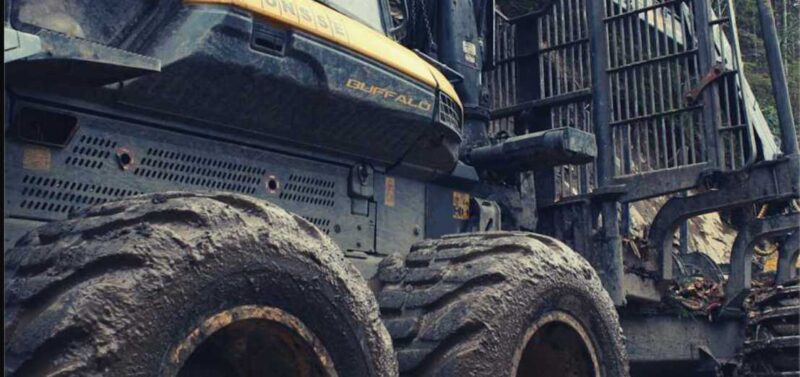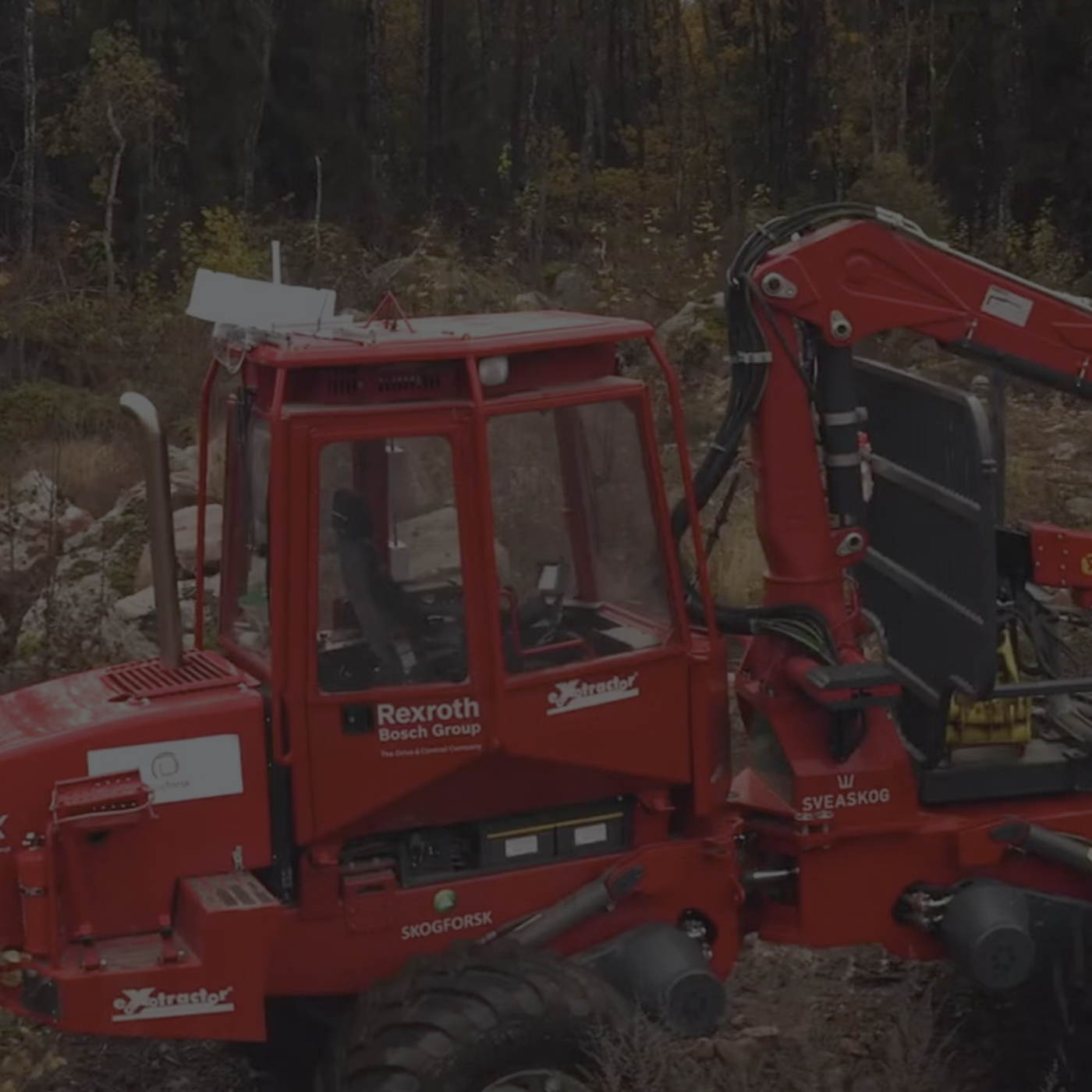Bringing 5G to the forest, where there are no base-stations.Recently I learned about new tests that was conducted by Skogforsk, the Swedish forestry research institute, in order to remote control forestry equipment via a mobile 5G-basestation that was placed in a drone. This was part of a research project aimed at pushing the boundaries of future forestry.
5G in the air
 In this test, a 5G-equipped drone, essentially functioning as an airborne mobile mast, provided the necessary coverage. For the first time, a forestry machine was remotely operated via 5G in challenging terrain. The test took place in a forested area near Västerås, Sweden.
In this test, a 5G-equipped drone, essentially functioning as an airborne mobile mast, provided the necessary coverage. For the first time, a forestry machine was remotely operated via 5G in challenging terrain. The test took place in a forested area near Västerås, Sweden.
Skogforsk has been conducting various projects on remote control of forestry machines using 5G, including through a local private 5G network. The latest advancement involves using a drone to carry the 5G antenna.
In November 2023, Skogforsk had previously tested a forestry machine using the public mobile network in Uppsala, I was there and had the chance to test it. The recent test, however, took the concept a step further by employing a drone to bring 5G coverage into the forest.
The challenge has consistently been to deliver 5G technology to the areas where forestry machines operate, often in regions without adequate coverage. In early May 2024, tests in Virsbo, outside Västerås, demonstrated that large vehicles could be connected and remotely controlled via a drone, which effectively served as a mobile base station.The virtual workplace was located in Skogforsk’s lab in Jälla, Uppsala, over 90 kilometers from the forwarder, with the operator remotely controlling the machine using screens, VR glasses, and connected controllers. During the test, the drone carrying the base station was approximately 500 meters from the forestry machine but had a coverage area extending up to three kilometers.
In Brief: What is a Forwarder?
 A forwarder is a forestry machine used for terrain transport (forwarding) of timber and parts from logging. Transport is carried out through the terrain to a storage site accessible to, for example, a timber truck. The forwarder is specially built to handle driving with a full load in difficult terrain. This means that the person driving a forwarder is subjected to considerable strain as the machine drives through the terrain, making the working environment for the operator less than ideal.
A forwarder is a forestry machine used for terrain transport (forwarding) of timber and parts from logging. Transport is carried out through the terrain to a storage site accessible to, for example, a timber truck. The forwarder is specially built to handle driving with a full load in difficult terrain. This means that the person driving a forwarder is subjected to considerable strain as the machine drives through the terrain, making the working environment for the operator less than ideal.
Next Step: Heavier Machinery
In this phase of the project, Skogforsk remotely controlled a forwarder (a type of forestry machine) on a clear-cut area to test the connection provided by the drone. The next step involves testing the connection and remote control capabilities on a scarifier, a much heavier machine designed to operate in inaccessible terrain.
The project’s goal is to explore how drone and 5G technology can enable remote areas in Sweden to be operated by remote-controlled vehicles in the future. Researchers at MittUniversitetet, a Swedish University, are testing the reliability and latency of data communication, which is crucial for remote control, especially over mobile networks or other wireless networks.
In Brief: Skogforsk
Skogforsk is a Swedish research institute funded by the forestry industry and the Swedish government. Its mission is to provide applicable knowledge, services, and products that contribute to profitable, sustainable Swedish forestry, thereby ensuring important societal goals. The main office is located in Uppsala Science Park, with research stations in Ekebo outside Svalöv and Sävar outside Umeå. The research spans the entire value chain, from seeds to industry, and includes areas such as higher forest production, environmental conservation, more efficient forestry machines that are gentle on both operators and the environment, better logistics, value-creating wood utilization, and the breeding of trees that grow better and can withstand future climate changes.

